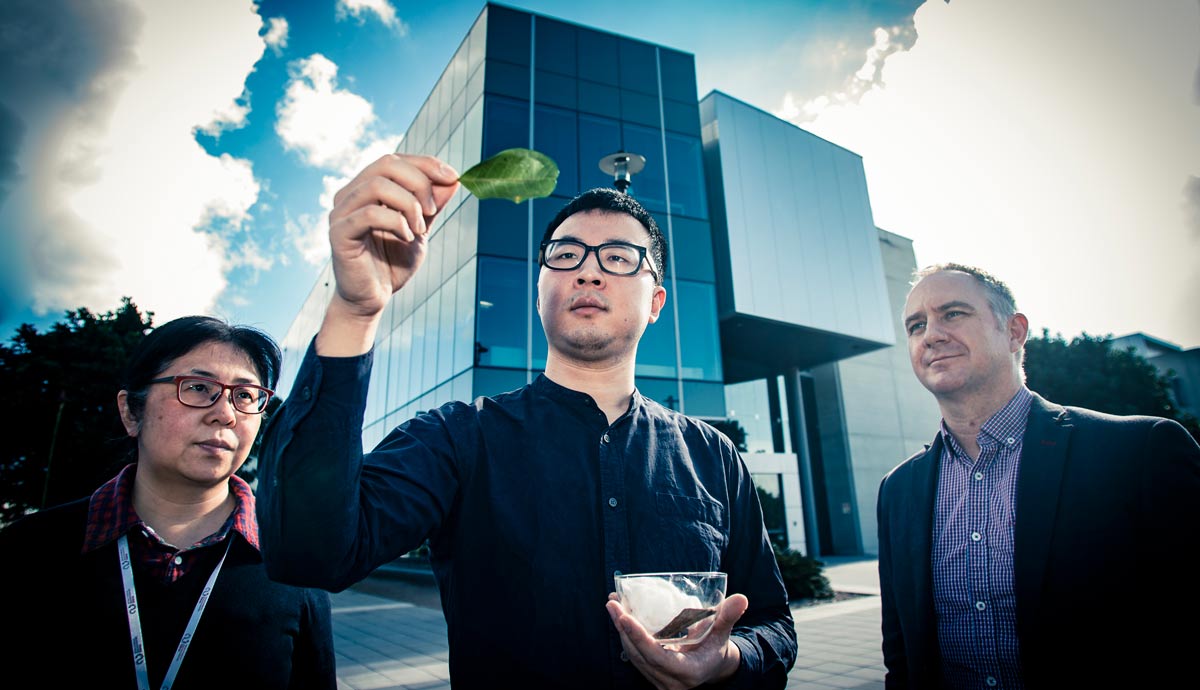July 3, 2017
The good wood on sustainable, efficient electronics
A new generation of low-cost electronic devices, ranging from implantable electrodes to energy harvesting, could be possible following advances in developing electrodes from nature’s building block, cellulose.
Until recently, miniature electronic devices for sensors or energy harvesting have been made from ceramics or synthetic polymers, limiting their range of applications.
This is particularly the case for use in the biomedical field, where ceramic-based devices are too brittle, potentially toxic and difficult to process. As a result, polymers have become the materials of choice.
Researchers at the University of Wollongong-headquartered ARC Centre for Electromaterials Science (ACES) set about testing an inventory of unexplored materials such as biopolymers that can add function and value to devices.
Their research investigated cellulose, a material that forms the building block of plant cells to make leaves, wood and other flora, making it one of the most common organic compounds on Earth.
Using cellulose from wood as an electrode material enables significant voltage output with the added benefit of ease of fabrication, biocompatibility and easy access to a renewable material.
“Cellulose is an electronic material that can generate charge for electrochemical reactions and to power devices,” research leader Associate Professor Michael Higgins said.
“In a way, leaves and plants are embedded with organic circuitry that we can harness for electronic devices.”
Cellulose is easily separated from other organic material using only water, which in its simplest form was how the ancient Chinese devised a pulping process to separate cellulose and make sheets of paper.
The virtually inexhaustible material has also found myriad other uses in everyday life, including more interesting applications such as in the original celluloid for motion picture film, explosives and ethanol-based fuels.
Cellulose is also a primary source of dietary fibre in the human diet.
The electrodes are intended for use in magneto-electric devices, which generate a charge from mechanical pressure, based on the principle of the piezoelectric effect.
In the case of magneto-electric devices, when a remote magnetic field is applied to the composite, the magnetic component rapidly changes its shape, inducing strain or mechanical pressure, creating an electric charge.
The final product was a laminate film consisting of a layer of cellulose film between two thin films of gold, with a magnetic strip used as an outer layer.
“Put simply, the construction involves gluing a cellulose film onto magnetic tape, a process that can be easily scaled,” Associate Professor Higgins said.
“Importantly, the synthesis and production of the cellulose component is very cheap and easy compared to the fabrication of piezoelectric ceramics or synthetic polymers that require harsh conditions, such as high temperatures and high voltages.
“This makes the cellulose a versatile piezoelectric material that can be widely applied in different configurations.”
The ability to generate charge without a wired connection makes possible a range of remote applications including sensors, energy harvesting, and biomedical implants.
Other piezoelectric biomaterials include bone, collagen – the main structural protein in skin and connective tissues – DNA, and even some viruses.
Associate Professor Higgins said the work with naturally occurring materials could open a new door for contactless devices.
“The understanding is that the piezoelectricity in biological tissues is used to provide charge that can attract or repel ions and other charged molecules.
"Of course, this occurs due to mechanical stress or vibrations and is particularly the case for bone.
“We could then manipulate these proteins and integrate them into devices that perform similar functions.
"In future we expect such electronics to be fabricated from other biological materials such as proteins or even our own DNA.”
The research, conducted in collaboration with researchers from University Minho, Braga, Portugal, was published recently in the journal Nature Communications.
